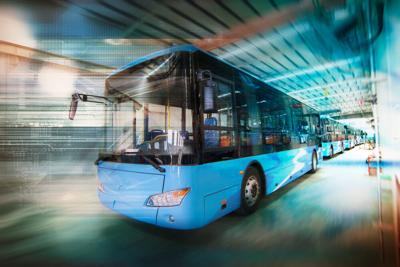(The Center Square) – Though ridership numbers on public transit have dramatically fallen, Pennsylvania cities remain dedicated to converting bus fleets to zero-emission vehicles in spite of the higher up-front costs.
While the up-front costs may balance out from long-term savings, rocky transitions in other cities and reliability issues could make an electric transition trickier in reality than on paper.
In September, Pittsburgh Regional Transit announced its goal to convert its buses to a zero-emission fleet by 2045 would cost $572.2 million. The cost estimate includes purchasing costs and operating costs, as well as training and facility costs.
The transit authority expects future savings to justify the early costs.
“While there are certainly additional up front capital costs, the long-term operational savings to operate zero-emissions vehicles are likely to offset most of the difference,” PRT Director of Public Relations Adam Brandolph said. “These long-term savings include lower fuel and maintenance costs.”
The funds to cover bus transition isn’t all state money.
“There is also more federal funding available for fleet diversification today than ever before, and we certainly hope to bring more of our federal tax dollars back home to western Pennsylvania,” Brandolph said.
Pittsburgh has tested electric buses “on what we considered to be our most grueling route that would also get back to the garage,” he noted, and the agency plans to test buses powered by hydrogen fuel cells as well.
“I think the writing is on the wall for EV or zero-emission vehicles being where all the transit agencies are going in the future,” Brandolph said.
Missteps with electric buses aren’t unheard of in Pennsylvania. In Philadelphia, SEPTA’s electric bus experiment ended with them “gathering dust in a South Philly bus depot” after the transit agency discovered cracked chassis and other problems.
As transit agencies across America embrace electric buses, disappointment has followed. In Alaska, Juneau’s electric bus is “sputtering” — mechanism problems have knocked it out of services and weaker battery performance has limited its route. Delays and retrofitting needs have left electric buses also “gathering dust” in Madison, Wisconsin.
In Los Angeles, electric buses had “a record of poor performance and mechanical problems,” along with possible ethical issues in how the contracts were awarded to a Chinese manufacturer.
When The Center Square contacted Los Angeles Metro about the city’s experience with electric buses, the agency declined to comment – even after receiving written questions requested by its spokesman.
If the cost differences become negligible in the long run, the reliability issues experienced by other cities make a switch to electric tricky.
“People are so well-intentioned. But if you look at the details, it’s a lot more complicated,” said Diana Furchtgott-Roth, director of the Center for Energy, Climate, and Environment at the Heritage Foundation and an adjunct professor of transportation economics at George Washington University. People "don’t want to be seen as against something that might help the environment, but you have to look at the nuts and bolts of it.”
The electric batteries and the energy to charge them, Furchtgott-Roth noted, require mining for minerals and the use of oil or natural gas.
“These are not emissions free. You have just moved the emissions from one part, maybe the center city, to the power generating plant,” she said.
Furchtgott-Roth noted that liquid natural gas buses could also be used.
“These are very, very clean buses and they go around all over,” she said. “There’s also the question of why do we want to be dependent on China or another country for our transportation? With the LNG buses, which are very low emission, we’re not dependent on anybody.”
Brandolph noted that Pittsburgh is “keeping the door open” for natural gas vehicles, but the focus is on zero emissions vehicles.
The federal government has a similar focus. The U.S. Department of Transportation's Federal Transit Administration has awarded $1.66 billion in grants this summer for new buses, most of them zero emission.
The focus on zero emission fleets may distract from another serious issue for transit agencies: disappearing riders. In Pittsburgh, ridership is down 46% compared to prepandemic numbers, as The Center Square previously reported. In Philadelphia, bus ridership was down 40% compared to prepandemic numbers in June.
In prioritizing electric buses, transit agencies are less concerned about ridership.
“Ridership is not a factor,” Brandolph said. “Regardless of ridership, as long as we’re operating buses, we need to make the best choices for the operational sustainability and well-being of the communities we serve. Ridership may affect the number of vehicles in our fleet, the sizes of the vehicles we purchase, or the routes we operate, but the propulsion system of the bus is wholly independent of that.”
Brandolph pegged the cost of a zero emissions fleet over 20 years instead of sticking with (and replacing) diesel buses at $530 million. That is slightly more than the agency’s annual operating cost of $519 million.
“There is little ‘trade off’ when the alternative is greater emissions and pollution, which affects our entire region and particularly many of the most vulnerable communities we serve,” Brandolph said. “In other words, you can’t put a price tag on cleaner air, better health, and ultimately improved quality of life for the residents of southwestern Pennsylvania.”









